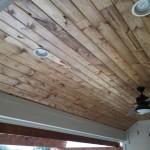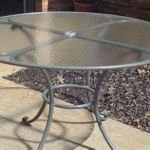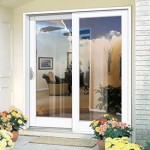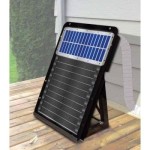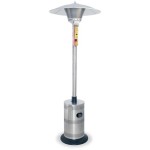Enclosing A Patio With Screen: A Comprehensive Guide
Enclosing a patio with screen is a popular home improvement project that offers a multitude of benefits. It allows homeowners to enjoy the outdoors without the annoyance of insects, harsh sunlight, and light rain. A screened patio essentially extends the living space, providing a comfortable and versatile area for relaxation, dining, or entertaining. This article provides a comprehensive overview of the process, considerations, and advantages associated with enclosing a patio with screen.
The decision to enclose a patio with screen often stems from a desire to enhance the usability of an existing outdoor space. Many homeowners find that patios are underutilized due to seasonal weather conditions and the presence of pests. By adding a screen enclosure, the patio becomes a more inviting environment, suitable for year-round enjoyment. This project can also increase the property value, making it a worthwhile investment for homeowners looking to improve their living spaces.
Before embarking on the project, careful planning is essential. This includes assessing the existing patio structure, obtaining necessary permits, selecting the appropriate screening materials, and deciding on the installation method. Failure to adequately plan can lead to unforeseen complications, increased costs, and unsatisfactory results. Therefore, taking the time to research and consider all aspects of the project is crucial for a successful outcome.
Assessing the Existing Patio Structure
The first step in enclosing a patio with screen is to thoroughly assess the existing structure. This involves examining the patio's foundation, support posts, and roof (if applicable). The soundness of these components is critical for ensuring the stability and longevity of the screen enclosure. Any structural deficiencies must be addressed before proceeding with the enclosure project.
The foundation should be inspected for cracks, settling, or other signs of damage. If the foundation is compromised, it may need to be repaired or replaced to provide a solid base for the screen enclosure. Similarly, the support posts should be examined for rot, insect damage, or structural weakness. Replacing damaged posts is essential for maintaining the integrity of the enclosure.
If the patio has a roof, it should be inspected for leaks, damaged shingles, or other signs of deterioration. A leaking roof can compromise the screen enclosure and lead to water damage. Addressing any roof issues before enclosing the patio is crucial for preventing future problems. The dimensions of the existing patio should also be accurately measured to determine the amount of screening material and framing required.
The height of the enclosure will also be determined, at least partially, by the existing structure. The higher the enclosure, the more materials will be required. If you're altering current support beams you will need to make sure they are sturdy enough to support the new structure.
Selecting Screening Materials
Choosing the right screening materials is a crucial decision that will affect the appearance, durability, and functionality of the enclosed patio. Several types of screening materials are available, each with its own advantages and disadvantages. The selection should be based on factors such as budget, desired level of visibility, resistance to insects and weather, and aesthetic preferences.
Fiberglass screening is a popular and cost-effective option. It is relatively easy to install, resistant to stretching and sagging, and available in various colors and mesh sizes. However, fiberglass screening is less durable than some other options and may be prone to damage from pets or sharp objects. Aluminum screening is a more durable option that offers greater resistance to tearing and impact. It is also resistant to rust and corrosion, making it suitable for coastal environments. However, aluminum screening is typically more expensive than fiberglass screening and can be more challenging to install.
Polyester screening is a premium option that offers exceptional strength and durability. It is highly resistant to tearing, stretching, and fading, making it a long-lasting choice. Polyester screening also provides excellent visibility and airflow. However, it is the most expensive type of screening material and may require professional installation. In addition to the screening material itself, the framing material used to support the screen should also be carefully considered. Wood, aluminum, and vinyl are common framing options, each with its own benefits and drawbacks. The choice of framing material will depend on factors such as cost, durability, maintenance requirements, and aesthetic preferences.
The mesh size of the screening also plays a significant role in its effectiveness. A finer mesh will provide better protection against small insects, such as no-see-ums, but it may also restrict airflow. A coarser mesh will allow for better airflow but may not be as effective at keeping out smaller insects. The climate and the prevalence of certain insects in the area should be considered when choosing the appropriate mesh size.
Installation Methods and Considerations
The installation of a screen enclosure can be a DIY project or a professionally installed one, depending on the homeowner's skills, experience, and available time. A DIY installation can save money on labor costs, but it requires careful planning, attention to detail, and adherence to building codes. A professional installation ensures that the enclosure is properly constructed and meets all necessary standards, but it will be more expensive.
Regardless of whether the installation is done by the homeowner or a professional, several key considerations should be taken into account. The first is ensuring that the enclosure is properly sealed to prevent insects from entering. This involves carefully attaching the screening material to the framing and sealing any gaps or cracks. Weather stripping can be used to create a tight seal around doors and windows.
Proper ventilation is also essential for maintaining a comfortable environment within the enclosed patio. Adequate airflow will help to prevent stagnant air, humidity, and odors. The screen enclosure should be designed to allow for sufficient ventilation, either through the use of screened doors and windows or through the installation of vents. Drainage is another important consideration. The patio should be sloped slightly to allow water to drain away from the enclosure. Gutters and downspouts can be installed to direct rainwater away from the patio and prevent water damage.
Local building codes and regulations should be consulted before beginning the installation process. Many municipalities require permits for screen enclosures, and these permits may specify certain requirements for materials, construction methods, and safety features. Failure to comply with building codes can result in fines, delays, and the need to redo the work. The complexity of the project is also another thing to take into consideration. Something such as adding an entire roof will likely require a professional.
One of the final steps will be inspecting the integrity of the screen enclosure. This involves visually inspecting the entire enclosure for any gaps, tears, or weaknesses in the screening material or framing. Any issues should be addressed promptly to prevent insects from entering and to ensure the longevity of the enclosure. The area should also be cleaned throughly to ensure that no debris or waste is lying around the patio.

Screen Room Screened In Porch Designs S Patio Enclosures

How To Enclose A Patio Porch Or Deck

How To Enclose A Covered Porch Close Off Your For The Winter

How To Enclose A Covered Porch Close Off Your For The Winter

How To Convert A Deck Screened Porch

How To Enclose A Patio Ziptrak
.jpg?strip=all)
Everything You Need To Know About Enclosing An Existing Outdoor Space

29 Enclosed Patio Ideas Design S Remodel

Screen Room Screened In Porch Designs S Patio Enclosures

Enclosed Patios How To Eoy Outdoor Living Year Round
Related Posts


